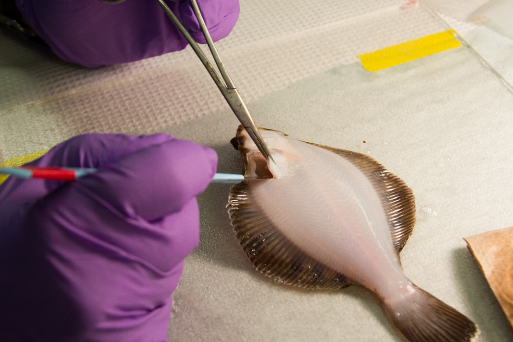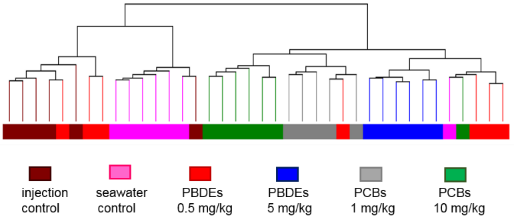Gene expression patterns of fish change in response to pollutant exposure, study shows

SCCWRP has found that the gene expression patterns of the hornyhead turbot change as they are exposed to different chemical pollutants at different concentrations, a proof-of-concept finding that reveals how gene expression analyses might one day be used as an environmental monitoring tool.
The study, completed this summer, involved exposing the hornyhead turbot in a lab to mixtures of one of two chemicals at two different concentrations – either the industrial chemical class known as PCBs or the flame retardant chemical class known as PDBEs. The two types of chemicals are common contaminants in sediment and fish.
SCCWRP created a new gene microarray containing probes for more than 14,000 genes to measure the fish’s corresponding gene expression changes.
Scientists detected about 420 gene changes in the fish that had been exposed to the two pollutant types.

Furthermore, the gene expression changes correlated strongly with the type of contaminant the fish had been exposed to. In other words, a fish exposed to one chemical type tended to exhibit gene expression patterns that were statistically different than a fish exposed to the other chemical type.
Wild fish caught from a site known to have high levels of PCBs and PDBEs also were analyzed during the study; as predicted, they exhibited a wider variety of gene expression changes than the laboratory fish did.
In follow-up studies, SCCWRP intends to explore the impact that other factors may have on gene expression changes, including fish size, life stage and movement patterns.
For more information, contact Dr. Alvina Mehinto.
More news related to: Bioanalytical Cell Screening Assays, Emerging Contaminants